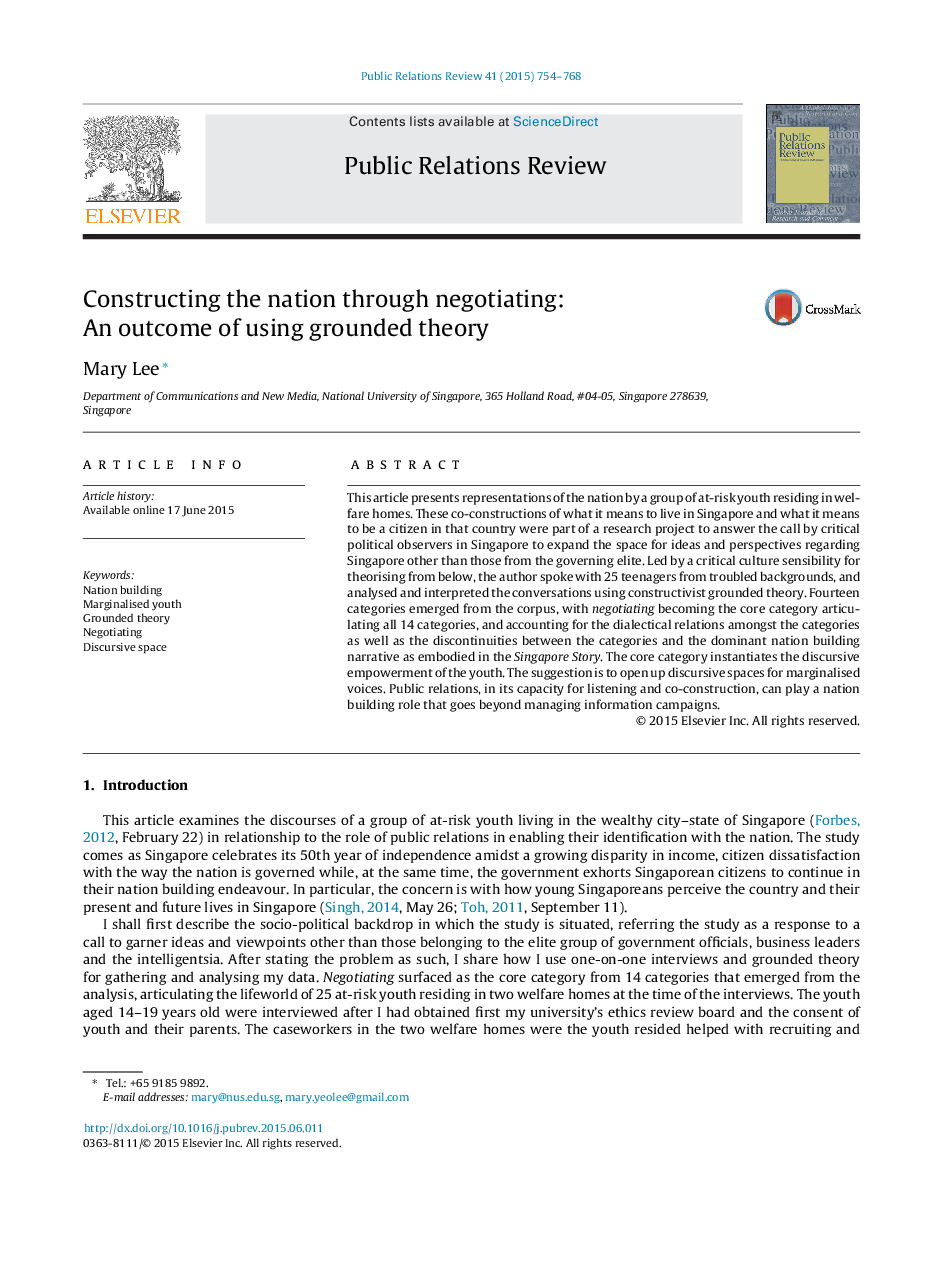| کد مقاله | کد نشریه | سال انتشار | مقاله انگلیسی | نسخه تمام متن |
|---|---|---|---|---|
| 138694 | 162470 | 2015 | 15 صفحه PDF | دانلود رایگان |
• I spoke with 25 at-risk youth about living in Singapore, their aspirations and challenges, and examine what their perspectives may mean for nation building and PR's role.
• I examine what their perspectives may mean for nation building and PR's role.
• Grounded theory was used to identify the concepts found in the discourse.
• Negotiating emerged as the core category.
• The suggestion is to open up discursive spaces for youth on the margins.
• Public relations, in its capacity for listening and co-construction, can play a role in nation building.
This article presents representations of the nation by a group of at-risk youth residing in welfare homes. These co-constructions of what it means to live in Singapore and what it means to be a citizen in that country were part of a research project to answer the call by critical political observers in Singapore to expand the space for ideas and perspectives regarding Singapore other than those from the governing elite. Led by a critical culture sensibility for theorising from below, the author spoke with 25 teenagers from troubled backgrounds, and analysed and interpreted the conversations using constructivist grounded theory. Fourteen categories emerged from the corpus, with negotiating becoming the core category articulating all 14 categories, and accounting for the dialectical relations amongst the categories as well as the discontinuities between the categories and the dominant nation building narrative as embodied in the Singapore Story. The core category instantiates the discursive empowerment of the youth. The suggestion is to open up discursive spaces for marginalised voices. Public relations, in its capacity for listening and co-construction, can play a nation building role that goes beyond managing information campaigns.
Journal: Public Relations Review - Volume 41, Issue 5, December 2015, Pages 754–768
